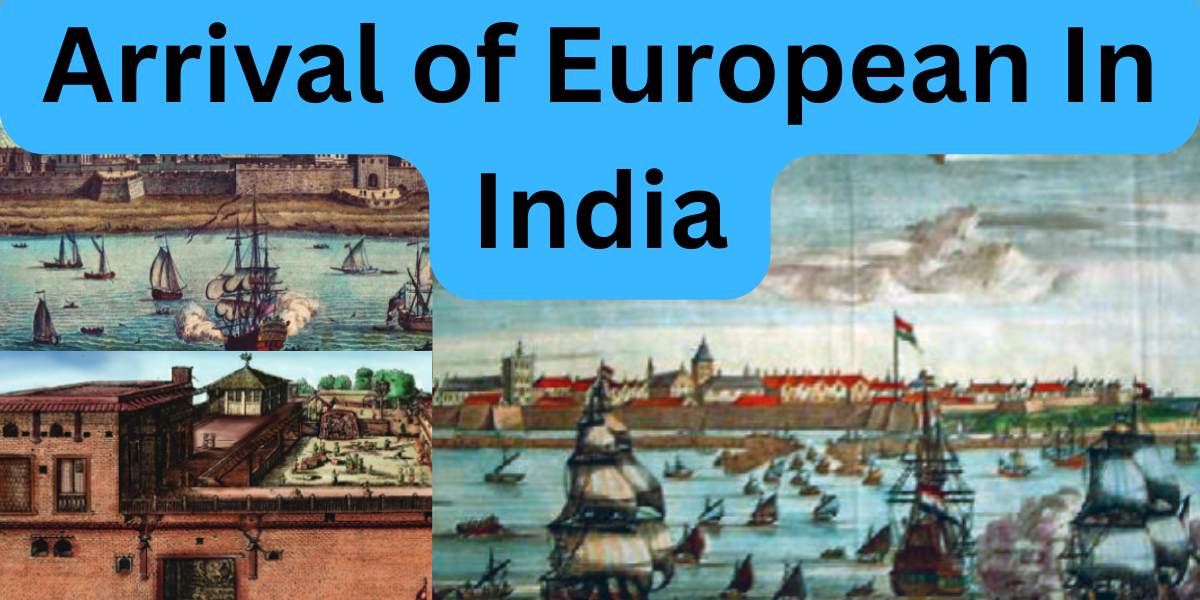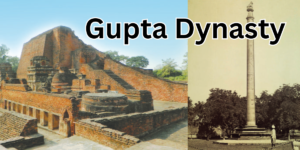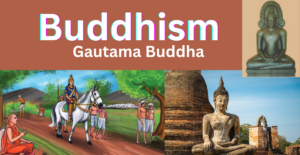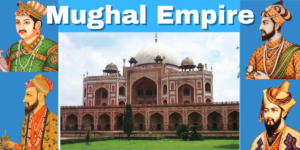Arrival of European In India
Introduction:
Arrival of European In India, European colonial powers colonized sections of the Indian subcontinent in pursuit of wealth and prosperity, fueled by the lucrative spice trade. Vasco da Gama arrived in India in 1497, and established direct trade relations with Calicut, a significant trading port. The Dutch established a stronghold in Ceylon and moved into India, but their progress was halted by the Battle of Colachel with the Kingdom of Travancore.
The Dutch Republic, England, France, and Denmark-Norway established trading operations in India, capitalizing on the disintegration of the Mughal and Maratha empires. In the late 18th century, Great Britain and France competed for dominance in India, resulting in Tipu Sultan’s defeat and the extension of British influence. By the mid-nineteenth century, the British had taken control of most of India, which became known as “the jewel in the British crown.” Despite colonization, India was a founding member of the League of Nations, competed in the Summer Olympics, and was a founding member of the UN.
Portuguese in India:
- May 20,1498 CE, Portugal’s Vasco da Gama discovered a new sea route from Europe to India. He circumnavigated Africa and reached Calicut.
- He was received by the Zamorin, the ruler of Calicut. He then returned to Portugal.
- Later in 1500, the sailor Pedro Osvari Cabral followed the sea route of Vasco da Gama and reached Calicut with 13 ships and some soldiers.
- Vasco da Gama reached India for the second time in 1501 with 20 ships.
- The Portuguese established trading settlements at Calicut, Cochin and Cannanore, but an enraged Zamorin attacked the Portuguese but was defeated.
- Cochin then became the capital of the Portuguese East India Company.
- Vasco da Gama then entered India for the third time in 1524, but fell ill and died in December 1524.
- The first Portuguese governor of India, Francis de Almeida, was appointed in 1505 and adopted a policy known as the ‘Blue Water Policy’ to strengthen the naval force.
- Almeida defeated the Muslim confederacy in a sea battle at Diu .
- In 1509 CE Alfonso – de-Albuquerque was appointed governor of the Portuguese territories in India.
- He was the real founder of Portuguese power in India who captured Goa from the Bijapur Sultanates in 1510.
- In 1515, he conquered the port of Ormuz in the Persian Gulf.
- At the time of Afonso de Albuquerque’s death, the Portuguese were the strongest naval power in India.
- Nino-de Cunha shifted the capital from Cochin to Goa in 1530.
- 1534 CE, Nino-de-Cunha captured Bassein from Bahadur Shah of Gujarat.He captured Diu in 1530.
- He occupied Salzed in 1548 after capturing Daman from the local chiefs of Gujarat.
- They set up the first printing press in Goa 1556 Cell.
- With the help of the printing press, a European writer printed and published “Medicinal Plants of India” in Goa in 1563.
Fall Of Portuguese:
- However, the Portuguese power collapsed in 1739, losing all the territories gained in India except Daman, Diu and Goa.
- By the late 16th century, England and Holland and, later, France, all had grown and become great competition.
- Moreover, the strength of the Mughal Empire and the growing power of the Marathas did not allow the Portuguese to maintain their trade monopoly in India for long.
- The governors who succeeded Afonso de Albuquerque were weak and incompetent.This eventually led to the downfall of the Portuguese Empire in India .
Impact of Portuguese:
- For the first time in the history of Indian politics, the Europeans captured territories from the Indian rulers.
- The Indian rulers were divided, and the Europeans took advantage of it .
- The Europeans adopted new methods of warfare. Gun powder and high artillery played a significant role.
- The Portuguese could control the monopoly trade of the Arabs, but it did not really help them. On the contrary, it benefited the British who eliminated pirates on the sea lanes and made sea travel
- Marriages between Europeans and Indians, encouraged in the territories occupied by the Portuguese, created a new Eurasian ethnic group who were later transported to other Portuguese colonies in Africa and Asia.
- The presence of the Portuguese in Chennai’s San Thome is very evident. Mylapore is the Portuguese ‘black town’. (George Town, the black town of the British era)
- Following the establishment of Portuguese settlements, Jesuit missionaries visited India.
- Notable among them are: Roberto De Nobili, whose linguistic skills enabled him to write extensively in Tamil and Sanskrit. He is considered the father of Tamil prose. 2. Henriques introduced printing in Tamil and is known as the father of printing press.
Dutch in India:
- The Dutch followed the Pochu Sikhs into India.
- Dutch East India Company 1602 CE The Netherlands United East India Company was The Dutch established their first factory at Masulipatnam.
- They captured Amboyna from the Portuguese in 1605.
- The Dutch built Fort Goldia in Pulicat in 1613.Initially they set up the capital at Pulicat and later shifted to Nagapattinam in 1690.
- In western India, they established trading depots at Surat, Broach, Cambay and Ahmedabad in Gujarat, Cochin in Kerala, Chinsura in Bengal , Patna and Agra in Bihar. They drove the Portuguese out of the Malay Strait and the Indonesian islands.
- In 1623 the Dutch mercilessly killed 10 English merchants and 9 Europeans in Amboyna. This further developed the enmity between the Dutch and the English.
- In 1759, the English defeated the Dutch in the Battle of Bedera.
- After that they lost every area to the British and then completely handed over to the British in 1795.
The arrival of the British in India:
- 31 December,1600 CE was granted a royal charter to trade in the East by Queen Elizabeth.
- The first East India Company reached Surat in 1608. He came to the court of Mughal Emperor Jahangir to get permission to establish an English trading post at Surat .
- 1612 CE, Jahangir allowed the East India Company to set up a factory at Surat.
- Later, the Indian Company of the East established trading posts in the coastal towns. The British traded cotton silk and salt from India in exchange for British goods.
- In 1614, Captain Nicholas defeated the Portuguese. Due to this, the British gained prestige in the Mughal court.
- As a result, in 1615, Sir Thomas Roe came to the Mughal court as an ambassador to James I., the King of England , and established factories for trade and trade in different parts of India.
- Thus, in 1619 CE, the English established their factories in Agra, Ahmedabad, Baroda, and Broach .
- The English established their first factory at Masulipatnam on the Bay of Bengal coast in 1611.
- 1639 CE, an English merchant named Francis Day acquired Madras from the Raja of Chandragiri, where he built a small fort around their factory known as ‘Fort St. George‘.
- King Charles II of England obtained the island of Bombay from the Portuguese by marriage. In 1668, the English East India Company obtained the island of Bombay on an annual lease of 10 pounds.
- 1668 CE and Bombay became the company’s headquarters on the west coast.
- In 1690, Job Charnock established a trading post at Sutanuti and in 1700 it was called Fort William. Later it developed into the city of Calcutta.
- The English East India Company became a political power after the Battle of Plassey in 1757 and the Battle of Buxar in 1764.
Danes in India:
- King Christian IV of Denmark issued a charter on 17 March 1616, creating the Danish East India Company. They established settlements at Tranquebar (Danasberg, Tamil Nadu) in 1620 and then at Serampore (in Bengal) in 1676.The Danes called Tranquebar Danasberg.
- The Danes had their headquarters at Serampur , but they could not strengthen themselves in India.
- Later in 1845 the Danes sold all their settlements from India to the British Government.
French in India:
- The French came to India in the 17th century for trade. The arrival of Europeans in India was associated with the French East India Company.
- French East India Company 1664 CE Lewis IV . by Minister Colbert,1668 CE. Then in 1667 a delegation under Francois Caron came to India.
- The first French factory was set up at Surat by Caron. In 1669, Marbara obtained permission from the Golkonda Sultanate to establish the second French factory at Masulipatam.
- Martin founded the settlement of Pondicherry in 1673 under a grant from the ruler of Bijepira, Sher Khan Lodi.It became the headquarters of French possessions inMartin built a fort called St. Louis in Pondicherry.
- In 1673, the French East India Company captured the city of Chandernagore near Calcutta.
- The French captured Mahé and Karaikal from the Indian rulers in the 1730s.They ruled these places as French India until India gained independence in 1947.
- In 1842, Joseph Francois Dupleix was appointed Governor of the Indian Company to the French.
Anglo-French Rivalry:
Carnatic Wars The British fought three successive wars with the French between 1746 and 1763 to establish their supremacy.These wars are called the Carnatic War by historians.
First Carnatic War :
- The war of succession in Europe also made it dominant in India, with King Charles VI of Austria dying in 1740.
- Bavaria, Saxony, and Spain united against Maria Teresa to succeed Charles .
- Taking advantage of this situation, King Frederick II of Prussia conquered Celia, a part of Austria.
- England opposed France because of this problem and as a result wars broke out between the two colonies in India.
- Nana, the head of Burnett, captured French ships carrying Indian goods on the English coast.
- As a result, the Governor of Puducherry Tuipley. He sought the help of the Nawab of Carnatic.
- Meanwhile, Dupleix contacted La Portonall, who was the governor of the island of France, who entered the Indian Ocean with eight of his warships.
- Biden, who was leaderless to the English observant, blocked the French ships with his four ships.
- Biden lost the battle on July 6, 1746.
Second Carnatic War:
- The Anglo-French rivalry in India paved the way for the Second Carnatic War.
- The death of Nizam-ul-Mulk in 1748 triggered a power struggle, with British and French rivals vying for power.
- Dupleix, the French governor, tried to increase French power in south India by interfering in local conflicts.
- The death of Nizam-ul-Mulk, the contended successor in Hyderabad and Karnataka, started the war.
- Muzaffar Jang and Chanda Sahib challenged Nasir Jung and Anwar-ud-din, who were supported by the French and supported by the British .
- Chanda Sahib opposed the appointment of Anwar-ud-din as the Nawab of Carnatic, which provoked hostility.Muzaffar Jung, Chanda Sahib and French forces defeated and killed Anwar-ud-din in the Battle of Ambur in 1749.
- Muhammad Ali succeeded his father as the Nawab of Carnatic.Muzaffar Jang was established as the Nizam, but the French brought in Salabat Jung in his place .
- Robert Clive Trichinopoly started a diversion experiment in Arcot to reduce the pressure, while Muhammad Ali hanged Chanda Sahib.
- Instead of ruling independently, Muhammad Ali and Salabat Jung became British and French clients, respectively.
Third Carnatic War:
- The Third Carnatic War was fought with the opposing forces of Britain and France during the Great War of the Seven Years‘ War (1756–1763) in Europe.
- In 1758, the French, under General Count Thomas Arthur de Lally, captured the British forts at St. David and Vijayanagara. However, the British severely damaged the French fleet under Admiral D ‘Auchi at Masulipatnam.
- The decisive battle of the Third Carnatic War was fought on 22 January 1760 at Vandiwash (or Vandavasi) in Tamil Nadu.English General Eyre Coote scored a major victory, defeating the French army under Count de Lally and capturing the Marquis de Bussy.
- Following the Battle of Carriagewash, Lally fought valiantly for eight months before surrendering Pondicherry on 16 January 1761, which dealt a severe blow to French power in India.
- The Treaty of Paris (1763) ended the conflict by returning Pondicherry and Chandannagar to France, while limiting their activities to trade. France’s political influence in India waned, leaving the British as a major European power in the subcontinent .
The factors that contributed to the British victory and the French defeat were:
- The English East India Company was a private company, allowing for faster decision-making and greater freedom than the state-controlled French company.
- The superiority of the British navy prevented important sea routes for the French, and the British captured major cities such as Calcutta, Bombay, and Madras, while the French controlled only Pondicherry. The British prioritized commercial interests and had more financial resources than the French.
- Superior British Generals: The British had able leaders such as Eyre Coote, Stringer Lawrence and Robert Clive, while the French had no such leadership.
- The success of Vandiwash cemented British power in India, opening the way for future expansion and colonial rule.
- During the Third Carnatic War, natives served in both armies, revealing the complexity of Indian colonial wars.
- The conflict was a pivotal moment in the struggle for control in India, resulting in British rule in the region.
Battle of Plassey (1757 CE):
- Bengal was the most prosperous and richest province in India.
- The Mughal Emperor (Farukhsiyar), operating through his royal cultivator, granted the East India Company the right to import and export goods in Bengal without paying taxes in 1717 CE .
- The Nawabs of Bengal, from Murshid Quli Khan to Alivardi Khan, opposed the English interpretation of the feudal lords of 1717 CE .
- Siraj ud Daulah succeeded his grandfather Alivardi Khan in 1756 CE, when he clashed with the British over Dasta’s abuse.
- Siraj ud Daulah attacked the English factory at Kasimbazar and then marched to Calcutta and captured Fort William on 20 June 1756 .
- The battle between Siraj ud Daulah and the English culminated in the Battle of Plassey on June 23, Robert Clive, the leader of the British forces, destroyed the Nawab’s army with an easy victory due to the treachery of the Nawab’s military commander (Mir Jafar).
- Siraj ud Daulah was forced to flee but was captured and killed by Mir Jafar’s son Miran.
- Following the Battle of Plassey, the British gained power in Bengal and thereafter expanded their influence in India.
Battle of Buxar (A.D. 1764):
- Mir Jafar, who failed to meet the British demands in 1760 CE, placed his nephew Mir Qasim on the throne of Bengal.
- Mir Qasim grew quickly as a powerful ruler, posing a significant threat to British interests in the However, Mir Qasim was defeated in a series of betrothals in 1763 AD and sought refuge in Awadh.
- Mir Qasim formed an alliance with Shuja-ud-Daulah, the Nawab of Awadh, and Mughal Emperor Shah Alam
- On October 22, 1764, the United Forces met the British East India Company’s army at the Battle of Buxar, and the British were decisively victorious.
- Following the victory at Buxar, Robert Clive was appointed governor of Bengal in 1765 CE. Clive established a new administrative system known as the “Dual Government” in Bengal, in which the Nawab of Bengal held nominal
Mysore War:
Following the Carnatic Wars, the British East India Company established authority in the important southern cities.The Kingdom of Mysore, controlled by the Wadiyar dynasty, faced threats under the Madras Presidency of the neighbouring countries such as the Marathas, Travancore, Hyderabad , and the British.Hyder Ali played an important role in securing Mysore’s borders and strengthening its army.
Hyder Ali’s Promotion:
- Starting in 1755, Hyder Ali supervised conflicts against the Mysore neighbours and successfully controlled threats.
- He served alongside the French in the Carnatic War, gained combat experience and strengthened the Mysore army.
- In 1759, King Krishnaraja Wodeyar II conferred the title of Fath Haider Bahadur on Hyder Ali. Hyder Ali used the tensions and the empty Mysore treasury to come to power in court, eventually becoming king after ousting the prime minister in 1761.
- He firmly established himself as Sultan Hyder Ali Khan and expanded his kingdom in South India through strategic tactics.
First Anglo-Mysore War (1767–1799):
- The British controlled trading centres such as Pondicherry and Arcot, but Hyder Ali aimed to expand into a less powerful Madras Presidency.
- The Nizam of Hyderabad launched the war to divert the British attention from the northern governments.
- In 1767, Hyder Ali declared war on the East India Company, first joining the Nizam of Hyderabad. Hyder Ali was able to pay the Marathas, prompting them to withdraw their help, and the Nizam of Hyderabad eventually turned to the side.
- In the Battle of Trinamalai, the British soldiers left Mysore and Hyderabad behind , the Nizam of Hyderabad concluded a treaty with the British and Mysore fought alone.
- Caught between the three armies, Hyder Ali chose peace, which resulted in the Treaty of Madras signed in 1769 between Mysore and the British.
Second Anglo-Mysore War (1780 – 1784 CE):
- Hyder Ali went to war with the Marathas in 1770 and expected British support under the Treaty of Madras, but the British refused.
- Hyder Ali, feeling deceived, joined the French following the Anglo-French War of
- Conflict broke out again in the Indian subcontinent, and the British tried to oust the French.
- Hyder Ali strategically assessed Mahe, a French-controlled port, and formed a confederacy with the Nizam of Hyderabad and the Marathas against the British.
- In 1780, Hyder Ali occupied the Carnatic coast with a large army, culminating in the defeat of the British at the Battle of Pollilur.
- Sir Iyer Coote finally defeated Hyder Ali in the Battle of Parangipettai in 1781. Hyder Ali died in 1782, and his son Tipu Sultan followed his aggressive policies.
- Tipu Sultan resisted the British, conquered Mangalore, and prohibited the shipment of certain goods to Europe .
- French navy withdrew support, and the Treaty of Mangalore in 1784 ended the conflict with the restoration of the borders.
Third Anglo-Mysore War (1790 – 1792 CE):
- Tipu Sultan modernized his army with French help and attacked the neighbouring kingdom of Travancore.
- Lord Charles Cornwallis led the British and their allies in the war against Mysore.
- The conflict lasted for three years and ended with the surrender of Tipu Sultan during the Siege of Srirangapatna .
- The strict terms of the Seringapatam Agreement included territorial concessions, regular ‘security’ money for EIC, the release of prisoners of war, and the holding of two sons hostage.
Fourth Anglo-Mysore War (1798 – 1799 CE):
- The new Governor-General Richard Wellesley tried to end the French-Mysore alliance.hoping that Tipu Sultan would regain control of his territory with French help.
- In 1799, the British, with the support of the Maratha confederacy and the Nizam of Hyderabad, laid siege to Srirangapatna.
- Tipu Sultan was assassinated, and Mysore signed an agreement with the EIC, establishing British sovereignty and installing a puppet king.
- This was the beginning of sub-alliances in India, the Nizam of Hyderabad was the first to sign.
- In 1799, a puppet king belonging to the Wadiyar dynasty was established to limit the border of Mysore and bring it under British control.
- The British officially conquered Mysore in 1831, although the Wodeyars continued to rule as puppets.
- The Wodeyars ruled the remainder of the Kingdom of Mysore until 1947, when it joined the domination of India.
Maratha War:Arrival of European In India
The Marathas excelled in warfare, using light cavalry, artillery, and hill forts for offensive and defensive tactics. European mercenaries, especially French and British advisers, helped them improve their military skills over time. Women in the Maratha armies used guns. They served as warriors with swords and cavalry.
First Anglo-Maratha War (1775-1782):
- Warren Hastings, who had been appointed GovernorGeneral, initiated direct operations against the Marathas. However, the East India Company was defeated in the Battle of Vatkan.
- The Treaty of Salbai, signed in May 1782, marked the end of the conflict between the EIC and the Marathas and the beginning of peace.
Second Anglo-Maratha War (1803-1805):
- After the Treaty of Bus, which made the Peshwa a second ally of the East India Company in 1802, tensions escalated, resulting in the Second Anglo-Maratha
- The East India Company won the battles of Asse and Laswari, significantly weakening the Maratha confederacy.
- The war ended with the Treaty of Rajput and despite minor Maratha conquests.
- the EIC became the dominant power in India, dominating an enormous territory.
Third Anglo-Maratha War (1817-1819):
- The Third Anglo-Maratha War was the result of conflicts over the East India Company‘s political intervention and Pindari attacks.
- TheEast India Company decisively defeated the Maratha princes, dissolved the Maratha confederacy and ended the Maratha supremacy.
- last Peshwa, Baji Rao II, received a pension, and the Maratha princes formed subsidiary alliances and established East India Company rule in India.





Pingback: Arrival of the British in India Learn Comrades